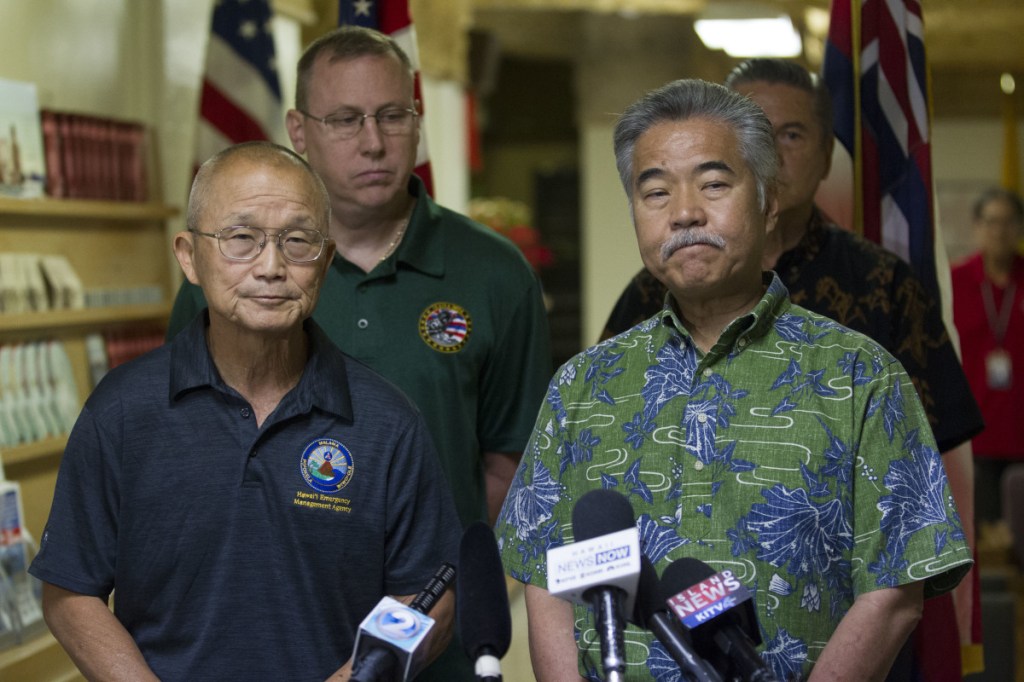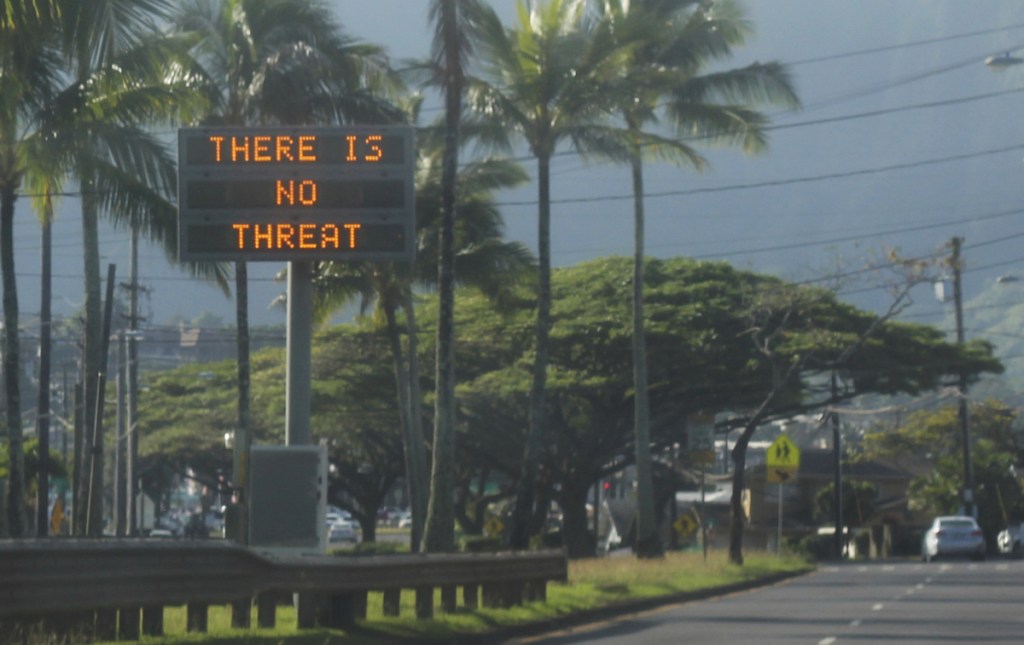HONOLULU — The second recent blunder in Hawaii’s planning for a possible North Korean nuclear attack left islanders shaken after an emergency alert warning of an imminent strike sounded on hundreds of thousands of cellphones.
For nearly 40 minutes people waited. Then came the second mobile alert: someone hit the wrong button, there was no missile.
Some people abandoned cars on the highway and others gathered in the interiors of their homes to wait for what seemed like the inevitable, a blast that would cause widespread death and destruction.
The message sent statewide just after 8 a.m. Saturday read: “BALLISTIC MISSILE THREAT INBOUND TO HAWAII. SEEK IMMEDIATE SHELTER. THIS IS NOT A DRILL.”
The Hawaii Emergency Management Agency’s administrator, Vern Miyagi, said he took responsibility for the mistake. He said officials would study the error to make sure it doesn’t happen again.
The state adjutant general, Maj. Gen. Joe Logan, said a written report would be prepared. State lawmakers announced they would hold a hearing next Friday. And Federal Communications Commission Chairman Ajit Pai said Sunday the panel’s investigation is already under way.
“Based on the information we have collected so far, it appears that the government of Hawaii did not have reasonable safeguards or process controls in place to prevent the transmission of a false alert,” Pai said in a statement.
The backlash from lawmakers was swift.
Hawaii House Speaker Scott Saiki said the system Hawaii residents have been told to rely on failed miserably.
“Clearly, government agencies are not prepared and lack the capacity to deal with emergency situations,” he said in a statement.
Hawaii U.S. Sen. Brian Schatz tweeted that the false alarm was “totally inexcusable.”
The Hawaii Emergency Management Agency tweeted there was no threat about 10 minutes after the initial alert, but that didn’t reach people who aren’t on the social media platform. A mobile alert informing of the false alarm didn’t reach cellphones until about 40 minutes later.
Hawaii officials apologized repeatedly and said the alert was sent when someone hit the live alert button instead of an internal test button during a shift change. “Today is a day that most of us will never forget,” said Hawaii Gov. David Ige. “A day when many in our community thought that our worst nightmare might actually be happening.”
Many people said they are resigned to the fact that there is little they can actually do if a missile were to be launched toward the remote island chain, especially with only about 15 minutes of warning time for a strike from North Korea.
“At that point, you just pray and find God, I guess,” said Joseph Kira, who was home with his kids when the alert came.
With the threat of missiles from North Korea on people’s minds, the state reintroduced the Cold War-era warning siren tests last month that drew international attention. But there were problems there, too.
Even though the state says nearly 93 percent of the islands’ 386 sirens worked properly during the December test, 12 mistakenly played an ambulance siren.
Send questions/comments to the editors.




Success. Please wait for the page to reload. If the page does not reload within 5 seconds, please refresh the page.
Enter your email and password to access comments.
Hi, to comment on stories you must . This profile is in addition to your subscription and website login.
Already have a commenting profile? .
Invalid username/password.
Please check your email to confirm and complete your registration.
Only subscribers are eligible to post comments. Please subscribe or login first for digital access. Here’s why.
Use the form below to reset your password. When you've submitted your account email, we will send an email with a reset code.